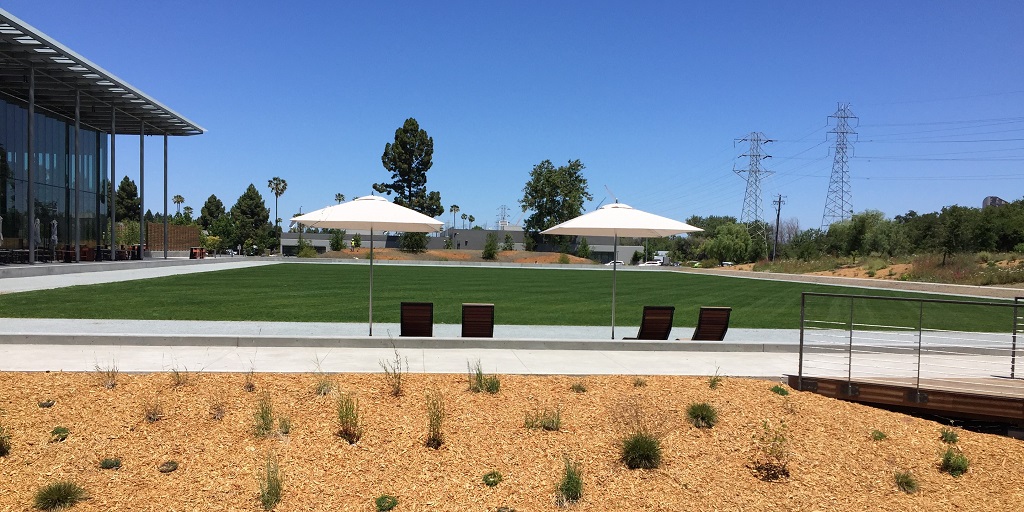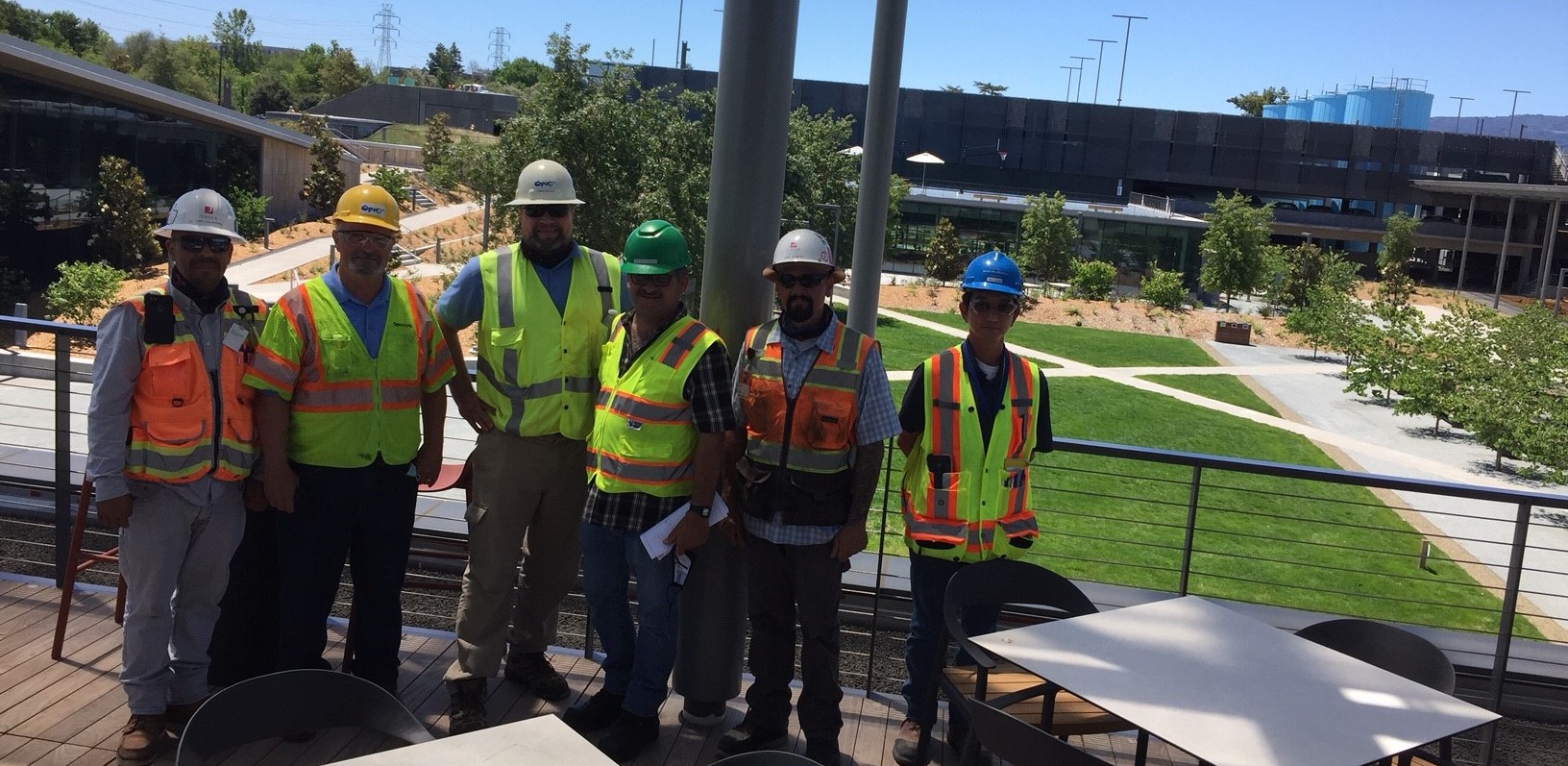Net Zero Water with EPIC at Microsoft Silicon Valley Campus
Microsoft Silicon Valley Campus (MSVC) built a pure, sustainable campus aimed to balance to Net Zero Water. A workplace of easy access, natural light, fresh air and an abundance of recreation activities designed to center around people and nature. Water is such a precious resource to integrate people and the nature around them. The landscape on this campus is inviting and unsurpassed. Above all, water saving technologies contribute to these landscapes. Consequently the Environmental Passive Integrated Conveyance (EPIC) system grows prolific turf at Microsoft with 60%-80% less water.
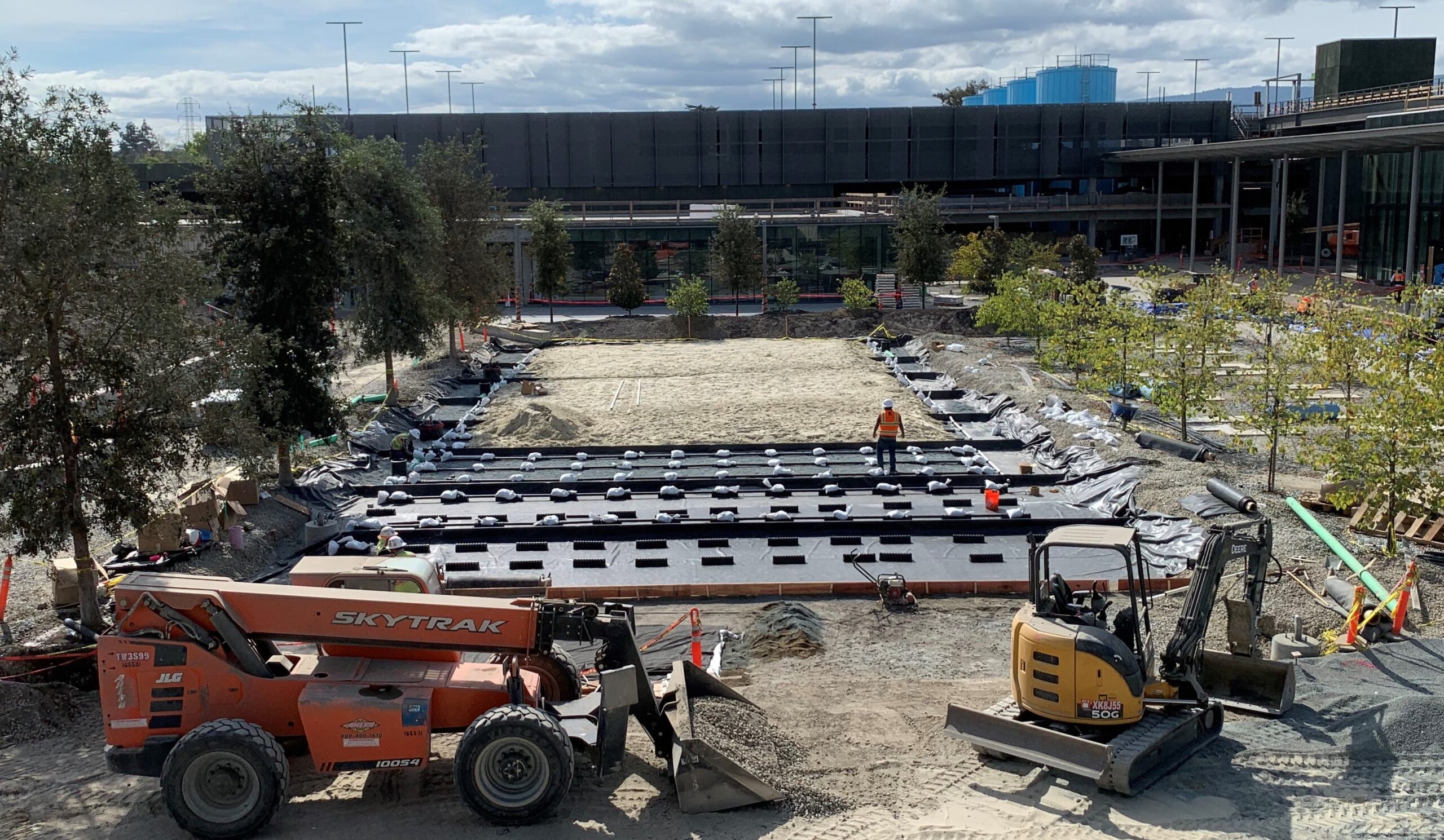

Recycled and storm water capture reuse to Net Zero Water consumption
The first thing you see in the parking facility is the multiple blue water tanks. They are enormous, standing several stories tall that hold storage of 250,000+ gallons of water. Various innovative technologies are throughout the several acre campus. Microsoft will recycle and reuse the water to a tune of 4+ million gallons annually. WRT | Planning + Design created lush and immersive landscapes throughout the campus. Sherwood Engineers designed the civil engineering to include recirculating the water to EPIC. In addition to recreation turf areas using the EPIC system, WRT also integrated a 4 acre green roof that adjoins various courtyards. Campus staff already report increased wildlife sightings at MSVC as the campus nestles into the surrounding ecosystem adjoining Stevens Creek.
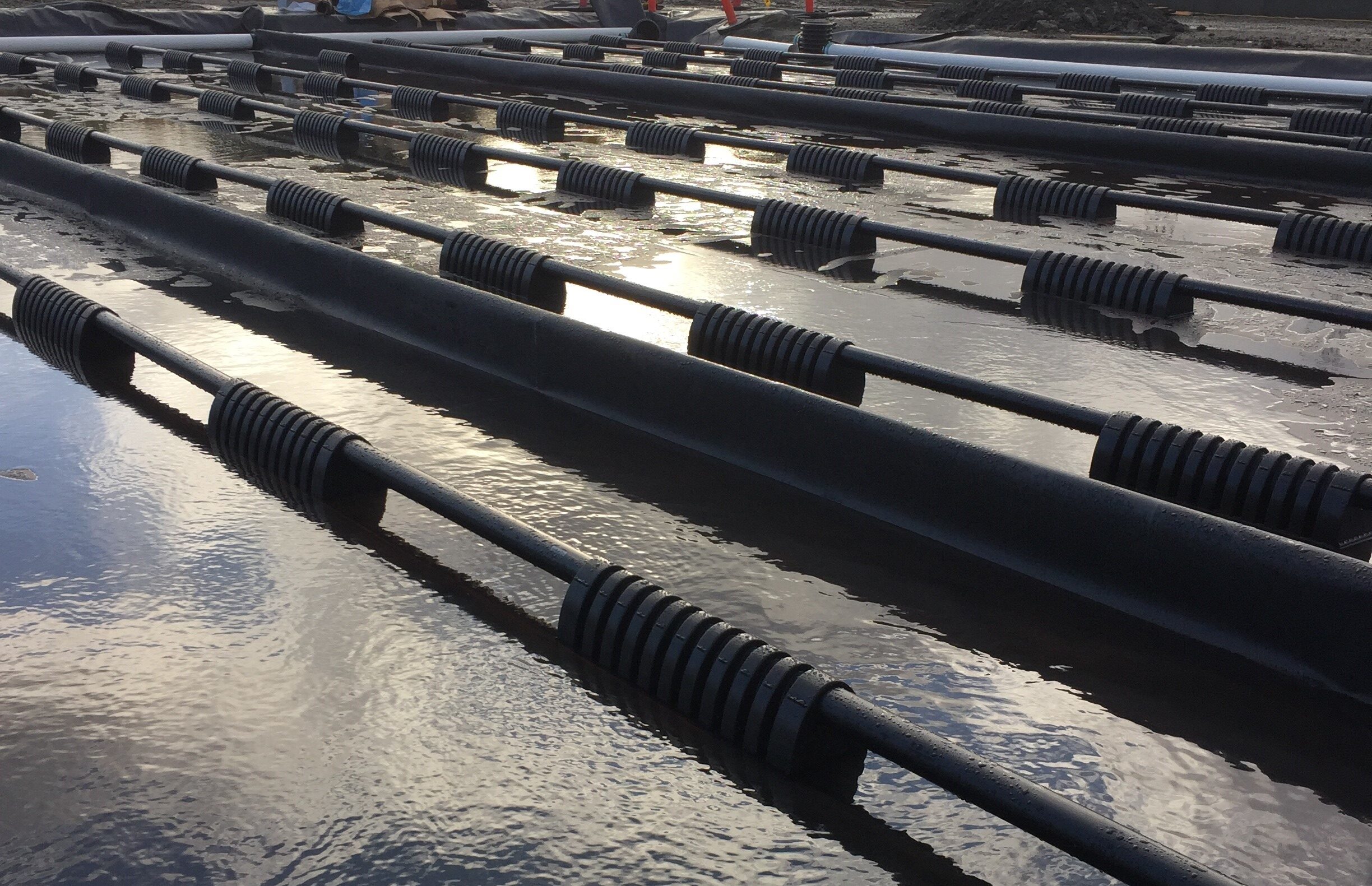
Rainfall is captured within the EPIC system and Firestone EPDM liner. This photo demonstrates how every drop is used to help make the project sustainable to Net Zero water at the Microsoft Rec Field.
Turf grass and landscape reverse the heat island effect to help sustain lower temperatures
The fitness center overlooks the “guilt free grass” areas in the East Garden and Recreation Field utilizing the Environmental Passive Integrated Conveyance (EPIC) system by EPIC Total Water Solutions, LLC. EPIC captures storm water and holds it within a sand profile. Similar to a sponge, EPIC holds 2.5 gallons per square foot. The system is lined with a water barrier EPDM liner by Firestone and recycled water is recirculated through a subsurface network of EPIC chambers and connecting pipes.
Most importantly, the EPIC system is then buried in sand, not soil. All plants grow in sand if water is available. Sand drains well and does not over compact like clay soils. The sand wicks the moisture to the surface and 3-Dimensionally by capillary physics. The surface tension of water is extends over a foot by the EPIC technique. The roots grow to chase the moisture down below. The plants breathe and drink at their discretion, at nature’s pace.
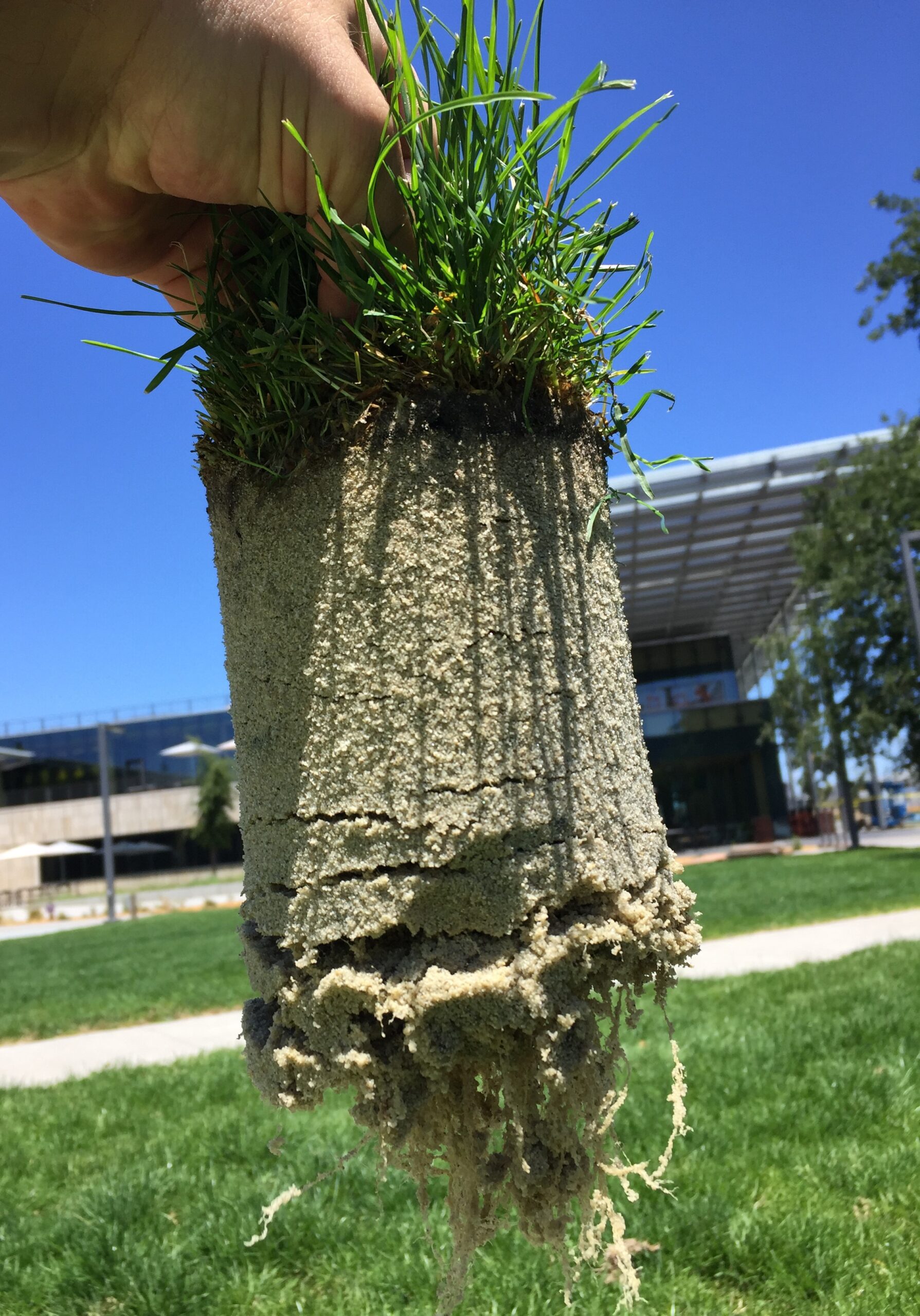
3 months after hydro-seed yields 8″ root growth in EPIC sand hydroponics. The EPIC system achieves net zero water.
Turf and lush landscapes are beneficial to cool the ambient air. Depending on environmental conditions, an average 10 degrees cooler temperature is easy to achieve. The evapo-transpiration by plant leaves help cool the ambient areas. Air Conditioning units require lower cooling degree days resulting in a 33% reduction of energy use. Various psychological benefits coexist humans with nature. For example, hospital patients have shown higher percentages of healing when green landscapes are visible. Microsoft encourages employee productivity to increase by immersion close to nature. Turf and landscapes that use water efficient techniques save energy and sustain to net zero water within the campus.
Microsoft Silicon Valley Campus Installation team
EPIC Region 9 from Los Angeles and EPIC TWS HQ from Reno, NV, provided technical assistance to the General Contractor Rudolph and Sletten along with Jensen Landscape and whom installed the EPIC system areas. The team certainly worked tirelessly during unprecedented times to deliver a new future of work environments.
How does EPIC mimic nature?
Firstly, EPIC functions as a passive, non-pressurized drainage system. EPIC reliably drains and filters through a sand profile with unique EPIC chambers that do not clog. By mimicking nature, EPIC may also sub-irrigate from the bottom up. Similar to a stream embankment. Coincidentally, this technique saves 60%-80% water use compared to conventional irrigation practices.
The Firestone EPDM pond liner prevents water loss to the ground. Thus, every drop is contained for use in the EPIC sand profile. The engineered aggregate profile consists of 2″ of gravel over the top of the EPDM liner. The gravel allows water to convey and distribute evenly throughout the laser level field. Secondly, on top of the 2″ gravel is an EPIC approved washed sand profile that extend up to finish grade.
Therefore, when it rains all drainage diverts to a single point in an observation vault in the corner of the field. Drainage through EPIC can keep up with record storms without surface pooling. This drain vault adjusts to determine the water level throughout the field. It’s that flat. Laser level flat. Yielding a true ball roll and safe playing surface for Microsoft employees and guests.

The EPIC system uses Firestone EPDM liner to keep all the water within the sand hydroponic growing profile. Innovative systems like EPIC at Microsoft only need irrigation once per week.

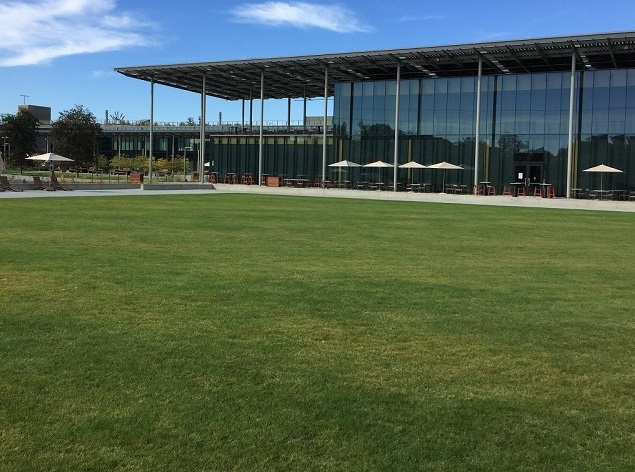
Microsoft leads into a new sustainable future
The Microsoft Silicon Valley Campus will sustain itself decades and centuries into the future. The workplace of the world has changed and many employees work from home. Microsoft has created indoor and outdoor work environments as comfortable and relaxing as home. The benefit of emergence with landscape is a primary feature both employees and the public may enjoy. Microsoft achieves net zero water use that integrates with nature.

